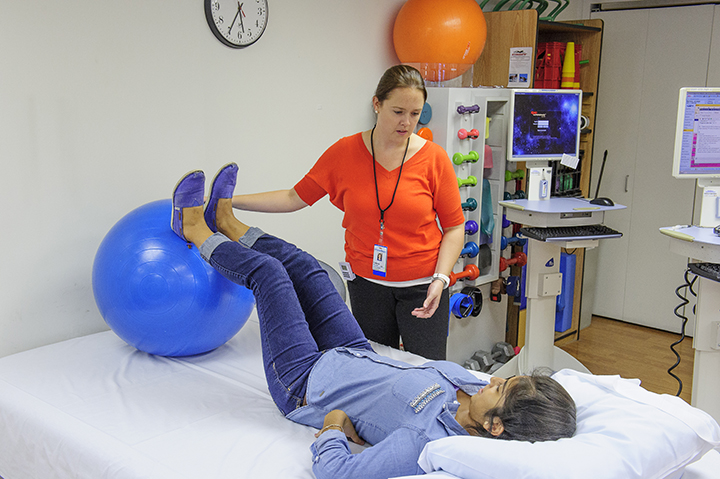Pelvic floor Rehab
- Home
- Pelvic floor Rehab
At Northview Physiotherapy Clinic, physiotherapy is directed at treating physical conditions causing pain and discomfort or limitations to mobility and lifestyle. The goal of the physiotherapist at Northview Physiotherpay is to relieve pain and help individuals resume their normal daily activities. Patient care at Northview Physiotherapy is based on orthopedic manual physical therapy, the art and science of utilizing highly skilled, specific hands-on techniques to diagnose and treat musculoskeletal injuries.
Our Physiotherapists guide patients in performing detailed therapeutic exercises customized to meet their therapy goals. The focus of therapy remains on motor control, pattern of recruitment, and timing of recruitment in order to retrain movement that often results in pain and disability. Therapeutic exercises are designed to improve strength, stabilization, range of motion, balance, and elite level functional performance.

For anyone suffering from pain in their pelvic floor, pelvic floor physical therapy may be able to help. At Northview Physiotherapy, we have specialized staff dedicated to understanding and treating patient with pelvic health issues. We provide comprehensive pelvic floor physical therapy to start treating your underlying pain and conditions.
The pelvic floor is a group of muscles found in the floor (or base) of the pelvis.
It has many uses in daily life such as:
Controlling the bladder and rectum Supporting the pelvic organs Stabilizing the upper body One can identify if they have a dysfunctional pelvic floor depending on various symptoms such as uncontrollable urine leakage, constipation, urgency to pee, and more.
Pelvic floor physical therapy treatments are specialized exercises designed to strengthen and stretch the muscles on the pelvic floor that support the uterus, rectum, bowel, and bladder.
Pelvic floor physical therapy can help relieve underlying pelvic pain, myofascial pelvic pain, and even help with symptoms of endometriosis.
We’ve treated many patients who’ve faced seemingly trivial symptoms in their pelvic area — symptoms which they thought were normal and didn’t know could be fixed. For many of these patients, we helped them fix their symptoms using pelvic floor physical therapy.


Pelvic floor physical therapy may be able to help with these symptoms: Leaking when you cough or sneeze (urinary incontinence) Urge to run to the bathroom (urinary urgency) Multiple trips to the bathroom at night Trouble controlling gas Chronic pelvic/vaginal pain Constipation Difficulty with bowel movements Difficulty with urination Discomfort in the lower back, groin, abdomen, hips, and legs Painful intercourse (sometimes after giving birth)
The pelvic muscles are just like any other muscle — if they don’t get worked out, they get weaker and weaker over time. To prevent that, we have to stimulate the muscles — by working them out. And that is the exact idea behind pelvic floor physical therapy. Like gym instructors, we work with our patients side-by-side to pinpoint problem areas and find suitable treatments that have the best chance of successfully relieving the pain.
Every patient is different, which is why we don’t have any cookie-cutter treatment plans. To get the best results from physical therapy, the doctor has to know exactly what’s going on with the patient’s pelvic area.
After diagnosis, the Physiotherapist can create a plan that’s custom-made for the patient and their needs.
It all starts with a consultation. The patient will talk to their Physiotherapist about what’s happening with their body, from how they’re feeling to what their physical activity goals are.


After that, there is both an internal and external exam where the Physiotherapist assesses the state of the pelvic area to see how it responds to certain things like coughing, peeing, or holding gas. This assessment will help the Physiotherapist paint a clear picture of what’s happening with the pelvic area and what can be done to treat it. Our specialists are trained not only in these clinical procedures, but also in dealing with the emotional discomfort that the patient may feel when talking about this intimate part of their body. The goal here is to help you.
Once the Physiotherapist understands the patient’s current situation, they can give them advice that suits the patient and their needs, considering their current diet, habits, medical history, and more.
The Physiotherapist will go in detail about what they found during the evaluation to make sure that the patient is fully aware and educated on what’s going on. This holistic approach ensures that the patient is getting the best treatment for their needs.
Future appointments will involve a detailed, solid plan that’s tailor-made for the patient and their body. Depending on the patient’s body’s response, the plan may change from time to time.
Over time, through a collaborative effort between the patient and their Physiotherapist, we should be able to create a solid plan that the body reacts well to.
Physical therapists may use a number of pelvic floor physical therapy treatment options to get results, including:
Pelvic floor stretches and exercises
Stimulation and dilators
Manual physical therapy (vaginal manipulation) Pelvic floor stretches and exercises Treat your pelvic pain while it’s still treatable Pelvic pain isn’t something to ignore until it goes away. Our doctors know very well how troublesome untreated pelvic problems can be. If left untreated, pelvic pain has the potential to become worse which can negatively effect the patient’s quality of life. If you’re from GTA, our pelvic floor physiotherapists can help with a number of conditions. To get started, just send us a message online or call us at 905-846-6500.

Frequently asked questions about pelvic floor physical therapy.